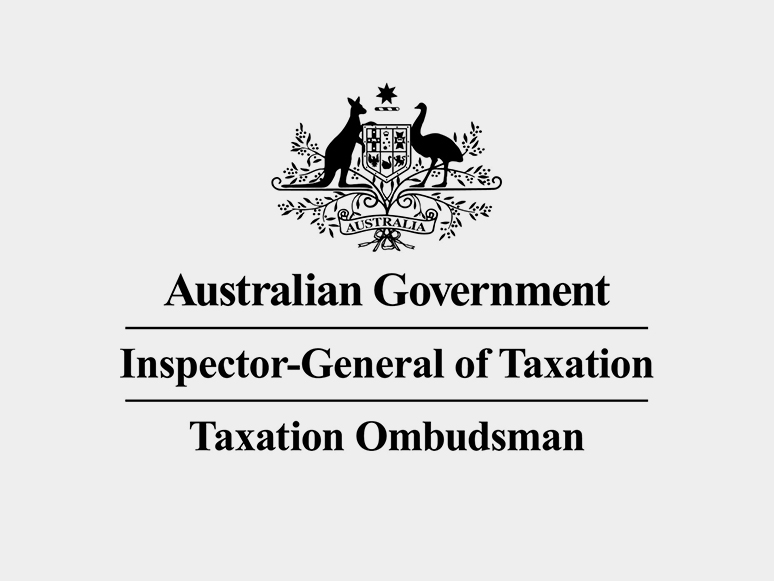logo


25th Mar, 2024

Since the government’s announced changes to the Stage 3 tax cuts to give lower income earners more benefits, the chorus of voices advocating for changes to other aspects of the tax system, such as negative gearing, has grown steadily stronger. So how much does negative gearing actually cost the nation each year? The answer to this can be gleaned from the 2023–24 Tax Expenditures and Insights Statement (TEIS) which, somewhat confusingly, contains figures relating to the 2020–2021 financial year.
Put simply, a tax expenditure arises where the tax treatment of a class of taxpayer or an activity differs from the standard tax treatment or the tax benchmark. These expenditures include tax exemptions, some deductions, rebates and offsets, concessional or higher tax rates applying to a specific class of taxpayers, and deferrals of tax liability.
The TEIS contains detailed breakdown of various categories, including rental property deductions. The ATO estimates that some 2.4 million rental property investors claimed deductions for expenses associated with maintaining and financing property interests, including interest, capital works and other deductions. Collectively for the 2020–2021 financial year, $48.1 billion worth of rental deductions were claimed, resulting in a total tax reduction of $17.1 billion.
Only around half, or 1.1 million, of these rental property investors had a rental loss (negative gearing), which added up to total rental losses of $7.8 billion and provided a tax benefit of around $2.7 billion for the 2020–2021 income year. The other rental deductions category (eg property maintenance, council rates etc) accounted for more than 50% of the amount claimed, with the next largest deduction being interest expenses, coming in at 39%.
Further analysis of the $2.7 billion negative gearing tax benefit (or tax reduction) reveals that 80% went to individuals with above median income (those earning above $41,500) and 37% went to individuals in the top income decile (those earning over $128,000).
Although the TEIS doesn’t provide data on the status of those claiming rental deductions, this can be somewhat inferred by the ages of those claiming the deduction. According to the ATO, more than half of the total negative gearing tax reduction went to individuals between the ages of 40 and 59 years old. Presumably a majority of individuals in this cohort have families, and a good proportion may be either the sole income earner or the primary income earner in their family.
This means the bulk of the commentary regarding negative gearing benefiting the rich may be on shaky ground.
However, these contentions aside, with the tax reduction on rental deductions expected to blow out to
$28.2 billion by the 2026–2027 income year (from $17.1 billion in the 2020–2021 income year) and it being the second largest tax expenditure (second only to concessional taxation of employer super contributions), it’s likely the calls for changes to negative gearing will only grow stronger in time.
23rd Oct, 2023

A recent Inspector-General of Taxation and Taxation Ombudsman (IGTO) report has recommended improvements to the small business litigation funding program, aimed at delivering better access to justice and fairness for small businesses.
The original intention of the funding program was to mitigate the disadvantage that small business taxpayers face against the ATO, which is a well-resourced and experienced litigant in proceedings which are often complex and costly.
Taxpayers that are self-represented in the Administrative Appeals Tribunal Small Business Taxation Division in disputes with the Commissioner of Taxation are generally eligible for litigation funding where the ATO engages external legal representation. Eligible small business taxpayers will have reasonable costs of engaging an equivalent level of legal representation covered.
The report from the IGTO was mainly based on two completed dispute investigations, where taxpayers expressed concerns that the ATO had attempted to cap the funding to levels below that necessary to run their matter.
There were also questions as to the ATO’s calculation basis for reimbursements which taxpayers were not made aware of when entering these agreements, and the ATO’s “numerous emails to the taxpayers’ legal representatives questioning the bills which … detracted from case preparation”.
The IGTO notes that without the adoption of its suggested improvements to litigation funding by the ATO, further dispute investigations should be expected. Meanwhile, in response, the ATO considers itself to be no longer bound by the original policy intent of the program, and has continued to confine the findings of the report to the two cases investigated, notwithstanding similar ATO actions and decisions that have been subject to further complaints to the IGTO.
However, it is understood that the ATO does intend to consult with stakeholders before committing to any improvements and that the IGTO recommendations contained in the report will be considered as a part of this process. While changes may not be forthcoming for the small business litigation program, the takeaway for taxpayers is that they can always turn to the IGTO, which provides an independent body to investigate the ATO’s decisions.
23rd Jul, 2023

The ATO has reminded eligible small business taxpayers to take advantage of the lodgment penalty amnesty program announced in the recent 2023–2024 Federal Budget. The amnesty applies to tax obligations covering income tax returns, business activity statements or FBT returns that were originally due between 1 December 2019 and 28 February 2022.
Superannuation obligations and penalties associated with the taxable payments reporting (TPAR) system are not included as a part of the program. The amnesty is running for the period 1 June 2023 to 31 December 2023.
To be eligible for the amnesty, your small business must have had an annual turnover of less than $10 million at the time the original lodgment was due, and lodge the relevant overdue forms and returns during the amnesty period.
Where your eligible business lodges relevant overdue forms and returns during the amnesty period, any associated failure to lodge (FTL) penalties will be proactively remitted – you won’t need to separately request a remission.
Although FTL penalties will be remitted, the ATO emphasises that no other administrative penalties or general interest charge (GIC) amounts will be remitted as a part of the amnesty. So, businesses with an existing debt or that accrue a new debt through late lodgment may still have GIC applied to those debts.
The ATO is also encourages businesses outside of the amnesty to lodge any overdue forms or returns to avoid being classified as “not being actively engaged with the tax system”, which is a red flag that may lead to other action. While FTL and other penalties may apply to those businesses, the ATO will consider the unique circumstances and may remit penalties on a case-by-case basis.
The ATO has a range of support options available for businesses where debts arise out of their lodgment activity, including payment plans, compromise of tax debt, or deferring repayments.
19th May, 2023

The Government will temporarily increase the instant asset write-off threshold to $20,000 from 1 July 2023 to 30 June 2024.
Small businesses – those with aggregated annual turnover of less than $10 million – will be able to immediately deduct the full cost of eligible assets costing less than $20,000 that are first used or installed ready for use between 1 July 2023 and 30 June 2024. The $20,000 threshold will apply on a per-asset basis, so small businesses can instantly write off multiple assets.
Assets valued at $20,000 or more (which cannot be immediately deducted) can continue to be placed into the small business simplified depreciation pool and depreciated at 15% in the first income year and 30% each income year thereafter.
The provisions that prevent small businesses from re- entering the simplified depreciation regime for five years if they opt out will continue to be suspended until 30 June 2024.
The instant asset write-off rules allow for the immediate deduction for the cost of a depreciating asset for small business entities. However, those rules were effectively replaced by temporary full expensing in relation to depreciating assets first held, and used or installed ready for use for a taxable purpose, between the 2020 Budget time (6 October 2020) and 30 June 2022, then extended to 30 June 2023.
Given that temporary full expensing will not be available in 2023–2024, the instant asset write-off rules come back into play. The threshold is currently $1,000 (but note again, this was not relevant while temporary full expensing allowed the cost of any qualifying asset to be written off immediately – which of course was available to other categories of taxpayers, not just small business entities).
Small business entities that use the simplified depreciation rules in Subdiv 328-D of the Income Tax Assessment Act 1997 are entitled to an outright deduction for the “taxable purpose proportion” of the “adjustable value” of a depreciating asset if:
The deduction is available in the income year in which the taxpayer first uses the asset, or first installs it ready for use, for a taxable purpose. The deduction is known as the “instant asset write-off”.
A depreciating asset is a low cost asset if its cost as at the end of the income year in which the taxpayer starts to use it, or installs it ready for use, for a taxable purpose is less than the relevant threshold.
The Budget papers confirmed that the Small Business Energy Incentive will provide businesses with annual turnover of less than $50 million an additional 20% deduction on spending that supports electrification and more efficient use of energy. This measure was originally announced by the Treasurer on 30 April 2023.
The Small Business Energy Incentive will apply to a range of depreciating assets, as well as upgrades to existing assets. These will include assets that upgrade to more efficient electrical goods such as energy- efficient fridges, assets that support electrification such as heat pumps and electric heating or cooling systems, and demand management assets such as batteries or thermal energy storage.
However, certain exclusions will apply, such as:
Up to $100,000 of total expenditure will be eligible for the incentive, with the maximum bonus tax deduction being $20,000 per business.
Eligible assets or upgrades will need to be first used or installed ready for use between 1 July 2023 and 30 June 2024.
Full details of eligibility criteria will be finalised following consultation.
17th Feb, 2023

Self- education expenses are generally tax-deductible for individuals if there’s a sufficient connection with your income-producing activities.However, until new legislation was recently passed, the amount you could deduct was limited by s 82A of the Income Tax Assessment Act 1936 so that only the amount spent over a $250 threshold was deductible.
This threshold was an artefact from when the self education deduction measure was first introduced more than 40 years ago, alongside a long-repealed concessional tax rebate of $250. The original intention of the deduction limit was to ensure that taxpayers didn’t receive both the tax rebate and a tax deduction for the same set of expenses.
With the non-deductible threshold removed, you will only need to ensure the following applies when you claim a self education deduction:
The change applies for tax assessments for the 2022– 2023 income year and onwards.
19th Dec, 2022

Taxpayers could soon be dealing with more paperwork at tax time, or facing the prospect of a lower tax deduction for work from home (WFH) expenses. The ATO has recently proposed a new revised fixed rate method of calculating WFH expenses for the purposes of claiming a tax deduction from 1 July 2022.
The proposed new rate of 67c per hour would replace the previous shortcut method of 80c per hour (which many people have been using during the COVID-19 pandemic) as well as the previous fixed rate method.
Before 1 July 2022, people working from home could use one of three methods for calculating a tax deduction for the expenses incurred:
Given the continual increase in energy bills and other inflationary pressures, this new proposed fixed rate method is likely to yield consistently lower deductions than if the actual cost method was used. Coupled with the abolition of the shortcut method, this seems to mean that taxpayers would either have to accept a lower WFH deduction in the coming years or deal with increased paperwork to be able to claim WFH deductions under the actual costs method.